Who We Are?
We are located at the heart of Ottawa, right downtown. Making signs & providing Sign Installation & Service in Ottawa since 1990
The theory behind neon sign technology dates back to 1675 before the age of electricity, when the French astronomer Jean Picard* observed a faint glow in a mercury barometer tube. When the tube was shaken a glow called barometric light occurred, but the cause of the light (static electricity) was not understood at that time.
Even though the cause of barometric light was not yet understood, it was investigated. Later, when the principles of electricity were discovered, scientists were able to move forward towards the invention of many forms of lighting.

In 1855, the geissler tube was invented, named after Heinrich Geissler, a German glassblower and physicist. The importance of the geissler tube was that after electrical generators were invented, many inventors began conducting experiments with geissler tubes, electric power, and various gases. When a geissler tube was placed under low pressure and electrical voltage was applied, the gas would glow.
By 1900, after years of experiments, several different types of electric discharge lamps or vapor lamps were invented in Europe and the United States. Simply defined the electric discharge lamp is a lighting device consisting of a transparent container within which a gas is energized by an applied voltage, and thereby made to glow.
The word neon comes from the Greek "neos," meaning "the new gas." Neon gas was discovered by William Ramsey and M. W. Travers in 1898 in London. Neon is a rare gaseous element present in the atmosphere to the extent of 1 part in 65,000 of air. It is obtained by liquefaction of air and separated from the other gases by fractional distillation.
The French engineer, chemist, and inventor Georges Claude (b. Sept. 24, 1870, d. May 23, 1960), was the first person to apply an electrical discharge to a sealed tube of neon gas (circa 1902) to create a lamp. Georges Claude displayed the first neon lamp to the public on December 11, 1910, in Paris.
Georges Claude patented the neon lighting tube on Jan. 19th, 1915 - U.S. Patent 1,125,476.
In 1923, Georges Claude and his French company Claude Neon, introduced neon gas signs to the United States, by selling two to a Packard car dealership in Los Angeles. Earle C. Anthony purchased the two signs reading "Packard" for $24,000.
Neon lighting quickly became a popular fixture in outdoor advertising. Visible even in daylight, people would stop and stare at the first neon signs dubbed "liquid fire."
Hollow glass tubes used to make neon lamps come in 4, 5 and 8 ft lengths. To shape the tubes, the glass is heated by lit gas and forced air. Several compositions of glass are used depending on the country and supplier. What is called 'Soft' glass has compositions including lead glass, soda-lime glass, and barium glass. "Hard" glass in the borosilicate family is also used. Depending on the glass composition, the working range of glass is from 1600' F to over 2200'F. The temperature of the air-gas flame depending on the fuel and ratio, is approximately 3000'F using propane gas.
The tubes are scored (partial cut) while cold with a file and then snapped apart while hot. Then the artisan creates the angle and curve combinations. When the tubing is finished, the tube most be processed. This process varies depending on country; the procedure is called "bombarding" in the US. The tube is partial evacuated of air. Next, it is short circuited with high voltage current until the tube reaches a temperature of 550 F. Then the tube is evacuated again until it reaches a vacuum of 10-3 torr. Argon or neon is back filled to a specific pressure depending on the diameter of the tube and sealed off. In the case of an argon-filled tube, additional steps are taken for the injection of mercury; typically, 10-40ul depending on tube length and climate it is to operate in.
Red is the color neon gas produces, neon gas glows with its characteristic red light even at atmospheric pressure. There are now more than 150 colors possible; almost every color other than red is produced using argon, mercury and phosphor. Neon tubes actually refer to all positive-column discharge lamps, regardless of the gas filling. The colors in order of discovery were blue (Mercury), white (Co2), gold (Helium), red (Neon), and then different colors from phosphor-coated tubes. The mercury spectrum is rich in ultraviolet light which in turn excites a phosphor coating on the inside of the tube to glow. Phosphors are available in most any pastel colors.
Our Jobs
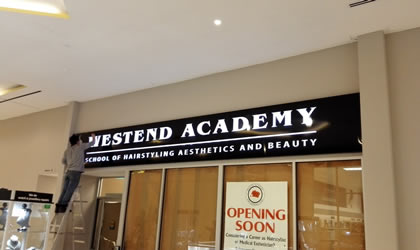
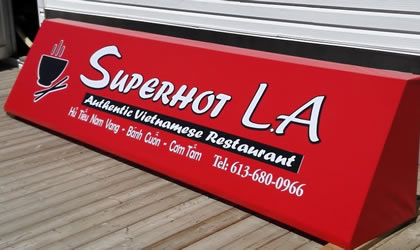
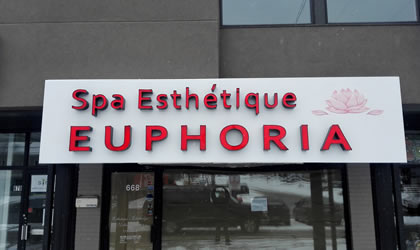
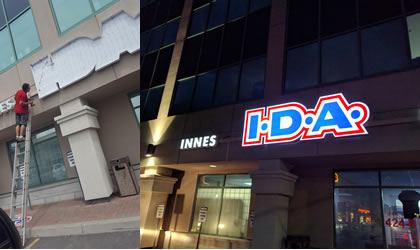
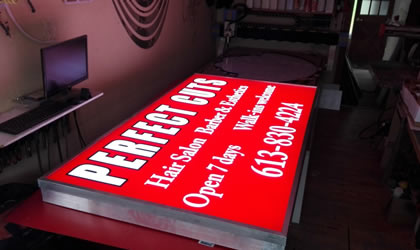
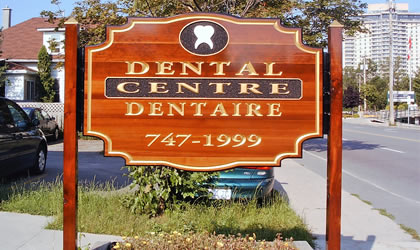
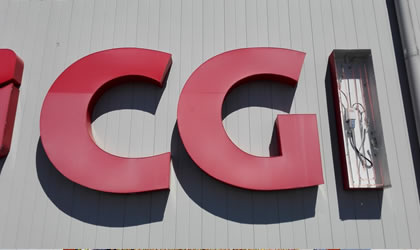

We specialize in:
- Neon letters
- Neon border
- Backlite signs
- Illuminated box signs
- Banners
- Wood signs
- Plastic signs
- Pop up signs
- Window decals
- Stickers
- Channel letters
- Gold leaf signs
- Magnetic signs
- Digital imaging
- Large printing
- Sandwich boards
- Business cards
- Aframe signs
- Awnnings
- Carved wood signs
- Posters
- Trasparencies
- Car wrap
- LED
- Silkscreen
